Devon Trevarrow Flaherty's Blog, page 57
October 7, 2016
Book Reviews: Collections by Arnold Lobel
 In our forward march through many of Lobel’s many books, we come to a couple of collections: Fables and A Book of Pigericks.
In our forward march through many of Lobel’s many books, we come to a couple of collections: Fables and A Book of Pigericks.
Fables is one of Lobel’s modern classics, and it won a Caldecott Medal for illustration. It features twenty original one-page fables, each featuring animals, a moral, and the light, humorous tone (which is at the same time soft and subtly dark) we have come to expect from Lobel. They also each feature a one-page illustration imbued with muted, sparkling colors and funny situations. This is another Lobel book to add to your collection, although some of the fables are kinda weird. My kids used to read these out to each other before bed, just because they loved this book, and I give it a less-enthusiastic A.
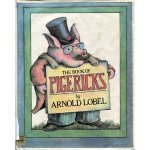 On the other hand, The Book of Pigericks is pretty terrible. I have come to love Lobel, but this book starts with an odd concept and then delivers on mediocre poetry and confusing characters. In desperation, Lobel uses a number of odd place names to create rhyme, giving the whole book a feel of rushed ridiculousness. Nope.
On the other hand, The Book of Pigericks is pretty terrible. I have come to love Lobel, but this book starts with an odd concept and then delivers on mediocre poetry and confusing characters. In desperation, Lobel uses a number of odd place names to create rhyme, giving the whole book a feel of rushed ridiculousness. Nope.


Book Review: The Random House Book of Poetry for Children
 I came across The Random House Book of Poetry (1983) when I was checking out as much as I could from the library from Arnold Lobel. Officially, it is a collection from both old and newer poets, as edited by the Children’s Poet Laureate, Jack Prelutsky, and just illustrated by Arnold Lobel, but since it’s about half illustrations, I thought we’d take it. It’s not the first time I have seen this book. I grew up with a copy on the shelf. I doubt if my mother ever read any of it to me, poetry not being one of her things. I also highly suspect that my aunt had bought it for us, as poetry is one of her things. So I was going in with a pretty blank slate.
I came across The Random House Book of Poetry (1983) when I was checking out as much as I could from the library from Arnold Lobel. Officially, it is a collection from both old and newer poets, as edited by the Children’s Poet Laureate, Jack Prelutsky, and just illustrated by Arnold Lobel, but since it’s about half illustrations, I thought we’d take it. It’s not the first time I have seen this book. I grew up with a copy on the shelf. I doubt if my mother ever read any of it to me, poetry not being one of her things. I also highly suspect that my aunt had bought it for us, as poetry is one of her things. So I was going in with a pretty blank slate.
I love this book. I would recommend it for every children’s library, including home collections. The choices are spot-on, and my eight-year-old was engaged while his older sister was more than fine with reading it to him when I was otherwise engaged. The illustrations are soft and classic, just like we have come to expect from Lobel. It is a superb introduction to poetry and a great book to read out to your children from the earliest ages.
You can’t get much more glowing than that.
Save


Series Review: Stewart’s Arthur
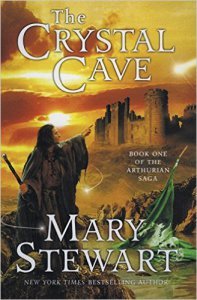 On my way through the most lauded of the Arthurian writings, I arrived at Mary Stewart and her Merlin Trilogy. I happened to have four of the books, so I did not realize that only three of them comprised the trilogy, while the fourth was one of two peripheral books. The series is as follows:
On my way through the most lauded of the Arthurian writings, I arrived at Mary Stewart and her Merlin Trilogy. I happened to have four of the books, so I did not realize that only three of them comprised the trilogy, while the fourth was one of two peripheral books. The series is as follows:
The Crystal Cave, 1970
The Hollow Hills, 1973
The Last Enchantment, 1979
The Wicked Day, 1983
The Prince and the Pilgrim, 1995
I read original Hodder & Stoughton volumes, and only the first four.
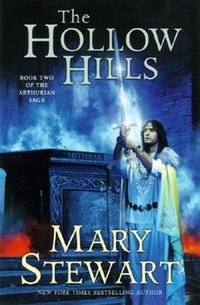 One of two things seem to have happened. The first: that I read some awesome Arthurian series somewhere, sometime, then lost or returned them, and since they are not listed on any best-of lists, I will possibly never find them again. The second thing that might have happened: I read a handful of Arthurian series, including Stewart’s and White’s, got them all sloshed together in my mind, aggrandized them, and now can’t find one to live up to my remembered expectations.
One of two things seem to have happened. The first: that I read some awesome Arthurian series somewhere, sometime, then lost or returned them, and since they are not listed on any best-of lists, I will possibly never find them again. The second thing that might have happened: I read a handful of Arthurian series, including Stewart’s and White’s, got them all sloshed together in my mind, aggrandized them, and now can’t find one to live up to my remembered expectations.
I think it’s the latter, unfortunately.
So this is the last set of Arthur I am going to review (not including some middle grades and the classics (Mallory and Sir Gawain)). As I sorta mentioned, it did not completely live up to my expectations. It was very fluid, interesting, and betimes great writing. Stewart’s writing hits many levels, from battles to love, which probably stems from her unlikely background in romance. But overall, I just wish it had been a whole lot better.
 And I most certainly would have stopped at The Last Enchantment, with the completion of the trilogy. If I read the other two, at all, I would have read them much later, and divided them from the series in my head. If at all.
And I most certainly would have stopped at The Last Enchantment, with the completion of the trilogy. If I read the other two, at all, I would have read them much later, and divided them from the series in my head. If at all.
I’m not even sure what more to say. The books kept me interested, beginning to end, but only mildly, as I was never truly absorbed. I really think the fault of the entire series lies in Stewart’s use of one, firm narrator. It was a real stretch sometimes to cover some of Stewart’s story, using just Merlin. Obviously, he couldn’t be everywhere all the time, and sometimes he was just too unattached to make the classic stories fresh or lively. Of course, Merlin is one of the coolest of Arthurian characters, but if the story had even just shifted to Arthur in the second book and Guinevere in the third, we might have seen more drama…
I was also confused by how much her stories resembled Stephen Lawhead’s. Hers were written a decade or more earlier than his, and man are they too close for my comfort (variant time period, magic realism instead of fantasy, etc.). I understand they come from the same legends and the same source material, but, like I said, I was uncomfortable with it. And it left the work feeling unoriginal (though it should have been Lawhead’s that felt that way.)
And while some of the other series were steeped in the Christianity that helped to sculpt the original legends, this series was the opposite. It skirted Christianity, writing it off when it had to deal with it. Instead, we get some twist on a utopian society where you can sleep around as much as you like (the men are compelled to and the women are just gagging for it), because you’ll be taken care of if you happen to birth some lord’s or king’s bastard and where gods do not demand allegiance or even acknowledgment in order to choose champions. As if.
Also, while I did keep reading, the stories felt fragmented and didn’t always have a strong drive forward. By modern standards, they were slow and disjointed, and even–can I say it?–unfulfilling, as were all of the characters. As Lulu’s Bookshelf put it, “As a retelling of Merlin’s early life I guess the ideas are quite interesting, as a story in its own right it’s simply dull. The elements are all there, but they’ve been stuck together with Plasticine.”
Overall, an okay read, but far from perfect. In fact, quite undeveloped, and yet I wouldn’t stop you from reading it.
______________
QUOTES:
THE CRYSTAL CAVE
“…as if my life were a growing tree which burst to flower and leaf with him, and now has nothing more to do than yellow to the grave” (p11).
“I shall know when what I foretell is human instinct, and when it is God’s shadow” (p198).
“Men that have god’s-sight, I have found, are often human-blind” (199).
“But I had begun to learn that in fact power made nothing smoother; when it came it was like having a wolf by the throat” (p252).
“I knew that thinking would not help me. If he was with me, he would come now” (p308).
“‘It was only a shooting star.’ / ‘But it came when it came.’ / ‘Timing is all that matters, Cadal'” (p304).
“One did not lie awake looking for reasons; one obeyed, then slept” (p324).
“The gods do not visit you to remind you what you know already” (p329).
“…and if soldiers decide something is lucky, then it is lucky” (p341).
“…the god does not speak to those who have no time to listen. The mind must seek out what it needs to feed on” (p352).
“…blood speaks to blood, they say” (p395).
“There was not time to search for the words that one could use to a king” (p395).
“…it was only her shadow, the shadow of a woman, slight and straight, like a sword” (p419).
MORE QUOTES TO COME


September 12, 2016
Website Update
I would like to apologize for the lack of new content on The Starving Artist in the past couple weeks, and I would like to offer a little explanation. We are in the middle of a new construction debacle, in which we have no internet and are not sure when we will have internet. Turns out, our brand new home was not adequately wired. We have people going to bat for us, and our building company has taken responsibility–finally–but we are still waiting. I did try to use the local library, but the internet was so slow that I could barely get my son through his necessary school lessons.
I look forward to returning to you, when this is resolved.
And thanks for your patience.


August 28, 2016
New Journal Series
 The last two months have seen as many publications from my indie publishing company, Owl and Zebra Press’s imprint, Muldover Books. While finishing up on a reprint project (which you’ll hear about next month), I decided to take a little flu-recovery-time to jump on a couple “quick” projects that I knew I could handle while living with family in the middle of a big move. I am very proud of the result.
The last two months have seen as many publications from my indie publishing company, Owl and Zebra Press’s imprint, Muldover Books. While finishing up on a reprint project (which you’ll hear about next month), I decided to take a little flu-recovery-time to jump on a couple “quick” projects that I knew I could handle while living with family in the middle of a big move. I am very proud of the result.
These two journals–preceding a third journal later in the year–come from the heart. Sure, anyone can publish a journal, but I chose these three journals because I had found a hole in the mountains of journals that are already on the shelves. These two journals (and the future The Beginner’s Journal) are journals that I needed, and couldn’t find.
 The List Journal is exactly what it sounds like. Sure, there are a few other list books that are currently popular, but none of them have a simple, daily journal format. I love making lists, and this journal is a way for those of us who love making lists to use that passion to explore and transcribe. Some of the lists are straight-forward (To Do, Bucket List), and others are more imaginative (Uses for Spoons, Superpowers). All of them allow a lot of space for interpretation and even a spot for free-styling it.
The List Journal is exactly what it sounds like. Sure, there are a few other list books that are currently popular, but none of them have a simple, daily journal format. I love making lists, and this journal is a way for those of us who love making lists to use that passion to explore and transcribe. Some of the lists are straight-forward (To Do, Bucket List), and others are more imaginative (Uses for Spoons, Superpowers). All of them allow a lot of space for interpretation and even a spot for free-styling it.
 The Feelings Journal is the next journal that I will be using. I know what it’s like to have lost touch with one’s feelings, and also what it’s like not to even realize it for awhile. When I finally noticed that I had a hard time naming basic feelings at the end of the day, I looked for a journal that could help me. Nope. So, for those of you who are right there: here it is! It follows a simple format, helping you to identify what you feel about what happened that day, plus sometimes how you feel about something that happened in your past. Also, every third entry explores a specific emotion. Complete with a brainstorming list of emotions and spots for doodling or taping, this is my–and your–perfect journal.
The Feelings Journal is the next journal that I will be using. I know what it’s like to have lost touch with one’s feelings, and also what it’s like not to even realize it for awhile. When I finally noticed that I had a hard time naming basic feelings at the end of the day, I looked for a journal that could help me. Nope. So, for those of you who are right there: here it is! It follows a simple format, helping you to identify what you feel about what happened that day, plus sometimes how you feel about something that happened in your past. Also, every third entry explores a specific emotion. Complete with a brainstorming list of emotions and spots for doodling or taping, this is my–and your–perfect journal.
Think you could use a little of that? Check them out, already for sale on Amazon, but soon at other venues, like Barnes & Noble, Diesel, or your local bookstore.


August 23, 2016
Book Review: Otis Spofford and Ellen Tebbits
W e have continued to read as much Beverly Cleary as was in the boxed set we bought last year. I believe, in fact, I am down to the almost-last review. (I am back-logged and owe you a Mouse and the Motorcycle trilogy review.)
e have continued to read as much Beverly Cleary as was in the boxed set we bought last year. I believe, in fact, I am down to the almost-last review. (I am back-logged and owe you a Mouse and the Motorcycle trilogy review.)
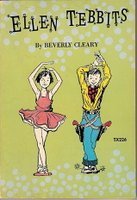 I believe that these books are related on some level to the Ramona and Henry Huggins series, like in the same neighborhood, but I can not seem to verify that anywhere. At any rate, they take place in a similar time and place and have similar situations and deal with similar subject matter, especially kids who mean well but just can’t seem to stay out of trouble.
I believe that these books are related on some level to the Ramona and Henry Huggins series, like in the same neighborhood, but I can not seem to verify that anywhere. At any rate, they take place in a similar time and place and have similar situations and deal with similar subject matter, especially kids who mean well but just can’t seem to stay out of trouble.
Even though both Otis Spofford and Ellen Tebbits are often listed among Cleary’s top books (with Ramon and Henry and Ralph S. Mouse), I do not think they translate to the modern reader nearly as much as the others. Ellen Tebbits, especially, is outdated. The main plot involves Ellen being afraid that everyone will find out that she wears woolen underwear in the winter. What? Doubt most of us even know to what she is referring, let alone can think of something that we wear that can make a parallel.
I also am not a fan of Otis, who is featured in both books. Ellen was a little flat, but Otis was just plain obnoxious to me. Whereas Ramona’s spunk and misbehavior is tempered by her charm, Otis did things that just seemed careless and–at times–real mean-spirited, and then didn’t seem to actually feel bad.
Still clear writing and fairly idyllic, gentle books. But I would not choose Ellen or Otis over Cleary’s more solid books, especially the Ramona series and Socks.


August 22, 2016
Book Review: Roscoe Riley Rules #1
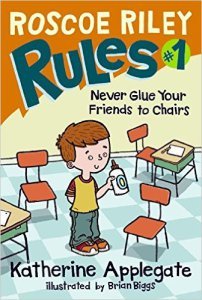 My son is what is termed a “reluctant reader.” It seems a little more–a little stronger–than reluctant, sometimes. About a year ago, a kind bibliophile who also happens to be family, sent along a small pile of easy reader-esque books which she hoped would entice my son to read. Alas, although he spent some time “picture walking” (another modern term used with children) through the Skylanders, it was Jack Stalwart that finally got his attention. (See review HERE.)
My son is what is termed a “reluctant reader.” It seems a little more–a little stronger–than reluctant, sometimes. About a year ago, a kind bibliophile who also happens to be family, sent along a small pile of easy reader-esque books which she hoped would entice my son to read. Alas, although he spent some time “picture walking” (another modern term used with children) through the Skylanders, it was Jack Stalwart that finally got his attention. (See review HERE.)
This book was in the pile.
I find that with these shorter books, there is never much to say, not quite enough to write a proper review. But I will do my best.
The series, as of right now at least, consists of seven books by Katherine Applegate and Brian Biggs (illustration), which are:
Never Glue You Friends to Chairs
Never Swipe a Bully’s Bear
Don’t Swap Your Sweater for a Dog
Never Swim in Applesauce
Don’t Tap-Dance on Your Teacher
Never Walk in Shoes That Talk
Never Race a Runaway Pumpkin
First, the title. I love the concept for this series, which consists of a play on words. Roscoe Riley rules! Of course he does. But also, Roscoe Riley. Rules #1: Never Glue Your Friends to Chairs. Etc. It immediately lets you know that lovable Riley needs these kinds of rules. The kinds you might not have to tell all the other children. But Riley? He needs it all laid out, because if you don’t tell him, how is he to know?
If you know any children like that, they might like to read about Roscoe.
Or not. My son wasn’t really in to Roscoe, but I thought Rocoe was adorable–just the right mix of sweet and spice–and his first book was real cute, too. I would recommend the first book and, by extrapolation, the series. Unless. Unless, you can’t stand writing with one sentence to a paragraph.
Like this.
For the entire book.
I’m not at all sure why the author does it.
As if children just can’t handle paragraphs.
Even though breaking it up like this makes it even harder to decipher on such a skinny page.
You kind of want to throw the book, even though you are enjoying Roscoe.
It also drives my husband crazy, so it can’t be just me. And the humor is more for the adults reading to the kids. Overall, Roscoe is gentle and predictable, with a dash of modern charm. Obviously, Roscoe learns a new lesson with each book. Recommended ages: 6-8.


August 16, 2016
Book Reviews: Early Readers by Arnold Lobel
This is a continuation of my reviews of books by Arnold and Anita Lobel. I broke the long list into groups, and this is the group of four Early Readers that I read with my son. For the record, I have recommended a few of the Lobel books for the Best Of list, including Frog and Toad and Mouse Tales. Also for the record, my son is at about the Early Readers stage of reading, but I read these books with him.
Note: All these books have that simple, duochromatic, watercolor, cross-hatch illustration thing going. The illustrations are really from another time, but are well done.
Also note: These books can be read with a child in one sitting, like something between a picture book and a very short chapter book.
 Owl at Home
Owl at Home
Definitely not my favorite Lobel book, and I don’t think that anyone would claim it is. Among other things which are a little lean (like charm, spark, plot, and language), it’s kinda dark and disturbing. Basically, it is about a haunted house and a disturbed tenant, but a little quirkier and lighter than you might expect from that pitch. I don’t know any kids–or learning readers–who would enjoy the quirk or the idea, but you could recommend it to your indie friend who’s feeling down.
 Uncle Elephant
Uncle Elephant
Now, this one is one of my favorite Lobel books. All the way through, I enjoyed the sweet relationship between the boy and his uncle, and by the end I also loved quirky Uncle Elephant almost as much as the little elephant does. It has some sadness in it and some more difficult–but subtle–themes.
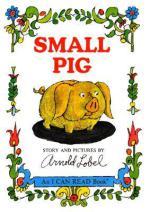 Small Pig
Small Pig
Ehn. Take it or leave it. The story has its good points and more average points. I could see some small children really liking the simple, soft story and asking for it over and over again, but more than not it is going to be too random and old-fashioned for most of them. It is also at the easy end of Early Readers, like a long picture book.
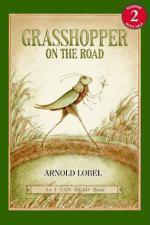 Grasshopper on the Road
Grasshopper on the Road
As with many of Lobel’s books, you really get the sense that the story is about much more than just imaginative silliness. In Grasshopper on the Road, the musings on people’s crooked personalities–worry-worts, workaholics, etc.–barely hides behind the oversimplified story: a grasshopper walks down the road in search of adventure and he encounters other bugs along the way. Then again, it’s another soft and cute story from Lobel. Recommend.
Save
Save


August 12, 2016
Series Review: Jack Stalwart
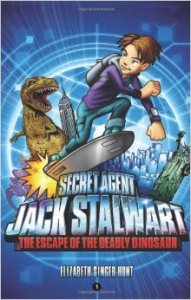 I will dare to give the Jack Stalwart series of children’s secret agent books three stars, but only because my eight-year-old son loves exactly two series of books, and this is one of them. If I had found these Elizabeth Singer Hunt books on my own, I would have only made it through the first few pages.
I will dare to give the Jack Stalwart series of children’s secret agent books three stars, but only because my eight-year-old son loves exactly two series of books, and this is one of them. If I had found these Elizabeth Singer Hunt books on my own, I would have only made it through the first few pages.
But who can argue with getting my totally uninterested son to read?
I mean, I can say nothing more for the writing and plot and details except that it is mediocre. There is little to no depth. And, quite frankly, there are a number of inconsistencies (in any given scene, even. One of my reading pet peeves are action scenes that–if you tried to act them out–don’t work. These books are full of those). Plus, I find the bizarre unexplained fusion of magic and science to be appalling. (Jack reaches for his super high-tech back pack and his wall map lights up to tell him his next secret destination… as Whizzy the talking globe whirls to life and chats with him. Is Jack a junior James Bond or Dora the Explorer?)
On the plus side, the books are consistent one with the other and the cover art is eye-catching and well-executed.

Concept: In this British series (which can be hard to find in the US except on Amazon), Jack’s brother Max has disappeared while working for a secret kid agency. Jack joins up to find his missing brother and becomes a Spy Kid (under a different brand), complete with tons of gadgetry and exotic destinations (which are supposed to teach your kid some geography and often something else, like art or history). My son always skips the bits at the front of the book, which are meant to educate (and, I suppose, to make the reader feel like a secret agent, too). He just wants a dinosaur to run through a city.
There are fourteen books in the series:
The Escape of the Deadly Dinosaur
The Search for the Sunken Treasure
The Mystery of the Mona Lisa
The Caper of the Crown Jewels
The Secret of the Sacred Temple
The Pursuit of the Ivory Poachers
The Puzzle of the Missing Panda
Peril at the Grand Prix
The Deadly Race to Space
The Quest for Aztec Gold
The Theft of the Samurai Sword
The Fight for the Frozen Land
The Hunt for the Yeti Skull
The Mission to Find Max
In the end, I am happy to have my son reading, but I would not have chosen this series for him. The imagination and action are sorta there, but the execution not so brilliant. For a similar, but more literary series, I would steer you toward Ruby Redfort, by Lauren Child, but I suppose that reading level is a little higher.


July 16, 2016
Book Reviews: Mouse Soup and Mouse Tales
 Mouse Soup and Mouse Tales, by Arnold Lobel. As far as I can tell, the two books are not exactly related, but they look like a series, are titled like a series, and are meant for the same age group. And both are about mice.
Mouse Soup and Mouse Tales, by Arnold Lobel. As far as I can tell, the two books are not exactly related, but they look like a series, are titled like a series, and are meant for the same age group. And both are about mice.
I picked these books up after my son so thoroughly enjoyed the Frog and Toad series by Lobel.
Mouse Soup is clever, although a little strange (by modern standards) at times. I found it to be enjoyable and well-written. It is appropriate for beginning readers, full of short words, repetition, and interesting vignettes.
 Mouse Tales was my favorite of the two. It is charming, charming, charming. My son and I read it through multiple times in a row, on our first time. I got a kick out of two of the tales, especially.
Mouse Tales was my favorite of the two. It is charming, charming, charming. My son and I read it through multiple times in a row, on our first time. I got a kick out of two of the tales, especially.
I would recommend both books, but especially Mouse Tales, and especially if you have a quirky sense of humor and an old-fashioned sense of charm.





